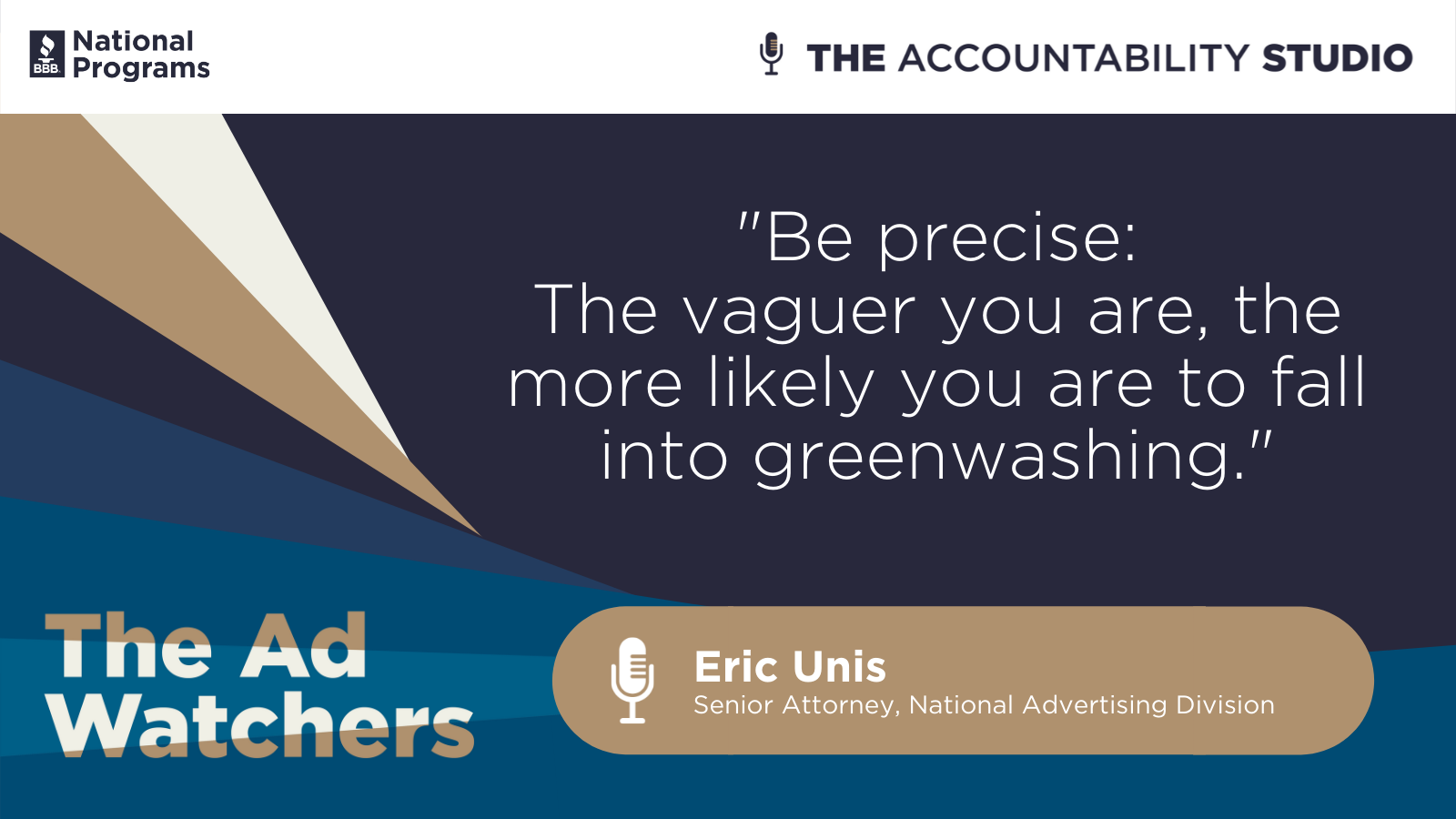
Accountability Studios presents season two of Ad Watchers—a unique podcast series brought to you by the National Advertising Division (NAD) of BBB National Programs, a team with 50 years of experience investigating and resolving disputes over the truthfulness and accuracy of national advertising campaigns.
In the season’s first episode, La Toya and Eric walk listeners through environmental benefit claims, or “green claims,” such as sustainability, to help advertisers and practitioners think about the questions they should ask when advertising in this arena.
La Toya states that green claims are covered by the Federal Trade Commission (FTC) Green Guides, comprehensive guidance documents that outline how to approach and substantiate environmental claims.
La Toya explains that the Green Guides were introduced around 1989 after a case involving Hefty’s degradable trash bags. Hefty claimed the bags were biodegradable and would degrade when activated by exposure to the elements. However, 90% of the bags wound up in landfills with no elements, so there was no possibility of degradation. The product was pulled off the market. La Toya shares that incidents like the Hefty example prompted the FTC to develop these Green Guides to help the industry address these types of claims. The FTC published its first version of the Green Guides in 1992, and they have only been updated a few times since then.
The conversation continued with Eric explaining the following about the Green Guides:
- They’re the guidelines that legal professionals use to guide their judgments and inform their thinking in a typically complex area to navigate.
- They provide valuable guidance to marketers on avoiding valid receptive environmental claims.
- They cover any claims about the environmental attributes of a product, package, or service, including claims on labeling, advertising, or any other form of marketing or promotional materials in any media.
- They cover general environmental benefit claims, carbon offset claims, and several specific terms like non-toxic, free of, or ozone-safe.
La Toya outlined four critical questions that companies should ask themselves when developing advertising that incorporates environmental marketing claims to help supplement the guidance found in the Green Guides:
- Is this advertising? When does what you’re doing cross into advertising?
- Are you using the word ‘sustainable’ correctly?
- Does the evidence fit the claim?
- How are you evaluating consumer takeaway?
Co-hosts La Toya and Eric provided numerous examples of cases associated with environmental marketing claims and explained whether each claim had enough support to be substantiated.
Among these examples was an aspirational claim that involved a Chipotle commercial. Eric noted that Chipotle made an aspirational claim, but they also demonstrated that they were putting action to their words. In that case, the aspirational claim was supported.
In a monitoring case, La Toya discussed a company that sold tablets made from algae. The company claimed that the product gives off more oxygen into the air than the entire Amazon Rainforest. She noted it was a very broad claim, and the advertiser did not have any objective evidence to support their claim; they could not substantiate it.
At the close of the episode, La Toya summarized a few key points to remember:
- It is essential to consider if the marketing claim is advertising. Companies try to draw people in with positive claims, but if these claims are considered advertising, they must be substantiated and cannot be misleading.
- Aspirational claims also need substantiation. Companies must show a genuine and demonstrable commitment to achieving their aspirations.
- When in doubt, make a narrow claim and be specific. Companies should tailor their claim and be as transparent as possible so their claim matches their support.
In their final remarks of the episode, La Toya and Eric thanked listeners for tuning in to the first episode of season two and reminded them to stay tuned for more guidance because there will be new, ongoing developments about environmental claims. They also teased next month’s episode, where they will be discussing survey evidence.
Listen to the full episode here.

